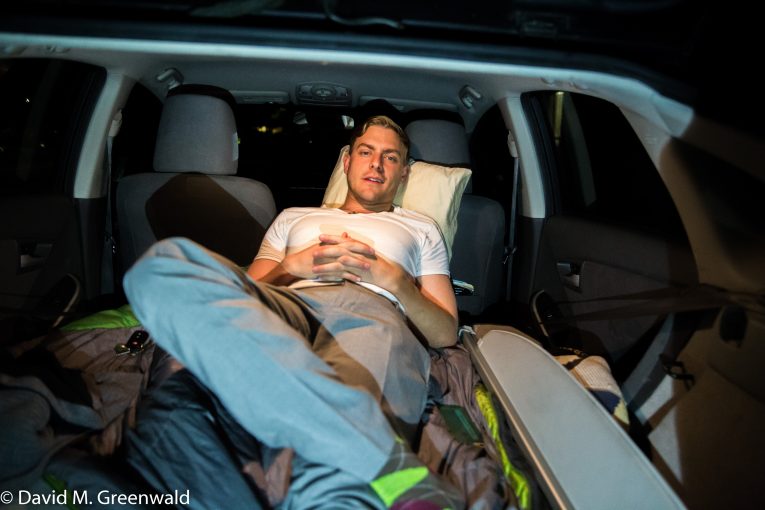

There has been legislation that passed in the Assembly and is working its way into the Senate which would allow homeless students who live in their cars to park overnight on campuses.
While not a solution for homelessness, the LA Times points out in a July 8, 2019, editorial that “it would offer a short-term fix for homeless students with cars who are already working on a long-term answer — getting a college degree to broaden their options and increase their earning power.”
But it is not just students who, lacking permanent housing, have taken up refuge in their car.
The Sacramento Bee is reporting this weekend, “The number of people, including families with children, living in their cars in Sacramento County has drastically increased in the last four years.”
Volunteers canvassing the county in January found that people were sleeping in at least 340 vehicles in the county. That marks a fourfold increase since 2015.
Most alarmingly, that figure includes around 100 children.
Like their community college counterparts, Sacramento State officials are not looking necessarily to solve the problem, but they are considering as a possible remedy “putting many of them into one or more designated parking lots. Instead of a tent city, Sacramento would create a car encampment for the homeless.”
Sacramento State researchers who worked on the most recent report of homelessness in Sacramento “recommended the city create so-called safe parking zones – lots where people can park their vehicles to sleep at night and where they don’t have to worry about being towed or break-ins.”
The suggestion would be that the lots could be staffed by security guards and even include bathroom and shower trailers, along with food brought in regularly and with medical and mental health services.
Homeless activists, the article notes, have been calling for this since 2017, while “cities with far smaller homeless populations such as San Luis Obispo, Monterey and Santa Barbara have done so.”
As we noted in yesterday’s commentary, counts of homeless populations are on the increase – especially the non-chronic variety, more likely to reside in cars as opposed to living on the streets or in tents.
From 2017 to 2019, homelessness in Yolo County rose 43 percent in point-in-time counts taken in January.
The population grew from 459 homeless people to 655.
Sacramento’s count found a 19 percent increase since 2017 – although that rate was slower than in previous years. The report by Sacramento State Institute for Social Research “also indicates rates of chronic homelessness has declined.” The rate of unsheltered chronic homelessness has declined as well.
But that means, “The 2019 rise in homelessness reflects the continued challenges with housing affordability locally and across the state with the majority of individuals surveyed indicating access to affordable housing would help to resolve their homelessness.”
Davis has considered a number of remedies for its growing homeless problem. This has included portable toilets in the downtown that would allow for usage there rather than on the streets.
Mayor Brett Lee has proposed the idea of a respite center that could include a “day shelter consisting of modular units where individuals could spend the day and have access to bathrooms, showers, and laundry facilities.”
It would also have “an overnight shelter consisting of sleeping cabins where individuals could spend the night.”
Meanwhile, non-profits like Davis Opportunity Village (DOVe) are looking at ways to help the unsheltered homeless population, which has exploded in Davis from 34 in 2009 to 114 in 2019.
“Homelessness is an intergenerational issue,” Martha Teeter explained to council a few weeks ago.
She said that, during the summit, they developed a Likert scale of things they wanted, “and at the very top was permanent housing. Close second was storage. Next was emergency shelter and then came health care and education – which surprised some of us but heartened us too,” she said.
“The target is 35 new units available for the vulnerable per year for the three years,” she said.
As the Bee points out, one of the problems they face is that while they have set aside millions in order to open about 800 additional shelter beds, the county has roughly 5570 homeless people – many of whom live in riverfront encampments, under freeway overpasses and outside City Hall.
“It’s time for a jolt of clarity and that jolt of clarity, to me, is people gotta be inside and in any way possible,” Mayor Darrell Steinberg said. “I don’t consider a car to be a long-term or even a medium-term place to be, but if we can organize an area in the short interim and use it to help people get indoors, I’m open to it.”
Among other problems, living in a car is dangerous. By creating a safe space, they would at least avoid some of that problem
But this is only a short-term solution. The longer term is to find solutions to the problems of chronic as well as shorter-term homeless problems. But in terms of cost-effectiveness, this may be a way to bring increased safety and buy time for a better and more permanent solution.
—David M. Greenwald reporting







As someone who spent several months at various times during transitions from one university to another, I applaud these efforts. People do live in their cars as temporary shelters. Although we were not as visible as those who are unsheltered on the streets, we faced many of the same obstacles and dangers. Having a safe space to park, toilet and shower access would be a huge boon for those between more stable living arrangements.
For those who might think that this is a non-issue, I invite you to go to Safeway parking lot to see how many students are sleeping out there on a given evening.
still waiting to get an answer as to which Safeway. I really want to go the frat party I was invited to, but no one will tell me which fraternity the party is at.